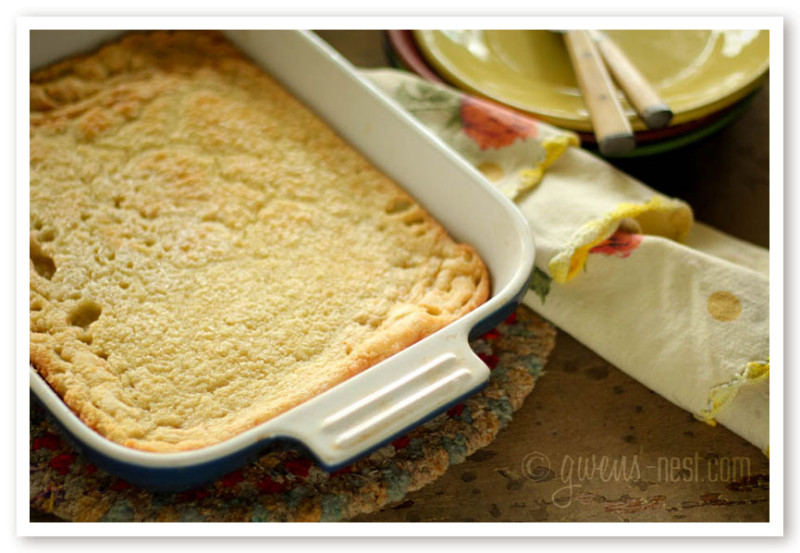 How do you convert recipes to be healthy if your family has decided to pursue a healthier lifestyle? I’ll share my top tips and tricks for converting family favorite recipes, as well as the easiest recipes to convert. I wrote an article for the Trim Healthy Mama Ezine about how to convert recipes to be THM friendly, and I thought I’d revamp it a bit for my blog. Although I personally really love cooking THM style, I know not all of my readers follow the Trim Healthy Mama book, so I’ve adapted this article to cover any type of cooking style.
How do you convert recipes to be healthy if your family has decided to pursue a healthier lifestyle? I’ll share my top tips and tricks for converting family favorite recipes, as well as the easiest recipes to convert. I wrote an article for the Trim Healthy Mama Ezine about how to convert recipes to be THM friendly, and I thought I’d revamp it a bit for my blog. Although I personally really love cooking THM style, I know not all of my readers follow the Trim Healthy Mama book, so I’ve adapted this article to cover any type of cooking style.
Don’t Trash That Recipe!
I have a policy on family favorite recipes: I don’t throw away my old recipes. Even my naughty ones. Food, in my opinion is what forms your family culture, and there are memories attached to the recipes and events where they were served. I’ve heard more “seasoned” family members lament the loss of a favored childhood recipe, and I really don’t want my own children to be dismayed that I’ve tossed out all of their favorites. So I have notebooks full of good candidates for converting.
Not all can be converted. I’ve yet to meet a really drool worthy low carb cookie (though experiments are in the works), and the gooey texture of caramel seems to be beyond the ability of the sugar subs I use all by themselves. But again…I’m continuing to experiment! 😉
Easy (and Hard) Recipes to Convert
Some of our VERY favorite combinations can easily be converted to healthier versions of their former selves. That’s what I call a win-win, and that’s what we’re going to shoot for in converting favorite recipes. I’ve found that casseroles, soups, stews, salads, and ethnic dishes are the easiest to convert, and some didn’t even need any tweaking!
Baked goods are the trickiest, due to the higher ratios of flour and sugar, and the healthy substitutes just don’t behave the same way. So save your baked good recipes for the ‘advanced’ file, and be sure to keep your eye out for healthy versions that someone else has already figured out. Pinterest is a *fantastic* starting place for finding already healthified versions of baked goods.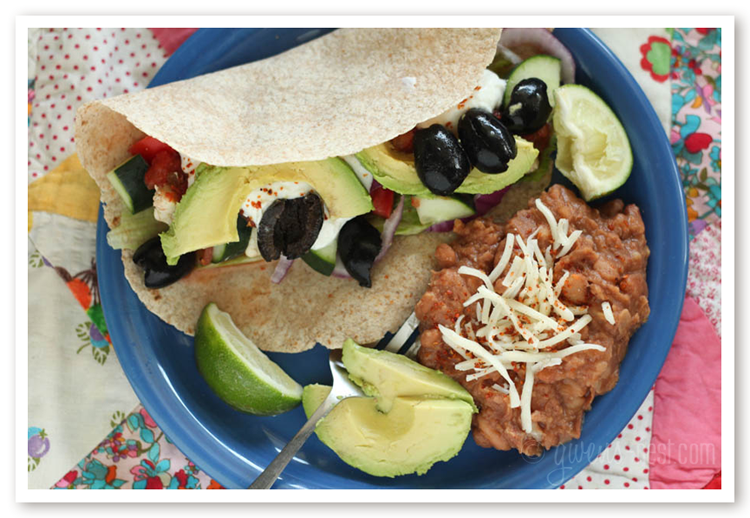
My Technique for Converting Recipes
I love the challenge of converting a recipe. Sometimes I get lucky and it’s just a very simple one ingredient tweak, and I can get stellar results the first time. Other times, I end up with several slightly off versions before hitting on something that we all love. Here is the basic workflow that I follow when converting recipes in my kitchen:
- First, I pick a destination for the recipe: If you’re following THM, does it fit best as a low carb S meal, or a low fat E meal? Or maybe it’s low in fat and carbs, and it can be a very versatile FP dish? If you’re doing Paleo or Weight Watchers, or some other eating plan, you’ll want to keep your food and number guidelines in mind here.
- Identify ingredients that are unhealthy or don’t fit with your goals for this recipe.
- Do a quick search on Pinterest & Google…what have other cooks done that might inspire me?
- Sketch out an idea for your final recipe: guesstimate amounts and subs that you think might work.
- Do the math: will a serving of this recipe really fit into the plan I’m using, or am I overshooting numbers?
- Test, taste, and tweak! Make version 1.0, and take notes as you go. I keep a notebook in my kitchen that I jot in as I cook, and write my thoughts on the final product, as well as ideas to make it better next time.
Let’s upack these a bit more…

Pick a Destination for Your Recipe
Maybe you want it to be low fat? Maybe sugar free is your goal, or Paleo. Whatever your eating ideology, you need to be very clear on what you are wanting to achieve to make this recipe healthy. Maybe this sounds like a no-brainer, but believe me- it’s an important first step to set this goal from the start.
Your recipe may give you some good clues as to how easily it will convert. If you’re shooting for low fat, you’re not going to be able to sub any of the lower glycemic but high fat nut flours. If your recipe calls for a higher sugar fruit, like peaches, it may not work to try to convert it to a very low glycemic recipe without seriously altering the ratios.
If you’re just starting down this road of converting recipes, make life easier and give yourself some time to learn by practicing with simpler recipes that naturally fit into the type of recipe you want to create.
[bctt tweet=”Whatever your eating ideology, you need to know what you are wanting to achieve to make a recipe healthy”]
Identify the Unhealthy Ingredients
This may, again, seem like a no brainer, but it’s important to know which ingredients you are looking for subs for. For your eating plan, do amounts count? For instance, a cake made with several cups of flour may not be an easy sub, but for a stew made with a tablespoon of flour, would that push your numbers much per serving? Or could you find a healthier thickener to sub instead?
For my kitchen, I have moved away from using vegetable oils or anything hydrogenated (or interesterified), boxed mixes, refined sugars, wheat flour (unless it’s sprouted, soaked, or sourdough), and anything with MSG. And my husband is currently dairy and gluten free. Yikes. That seems like a lot to avoid. But instead of focusing on what we can’t have, I try to focus on what we can enjoy and on learning the good subs for the things we are avoiding. (More on that in a minute!)
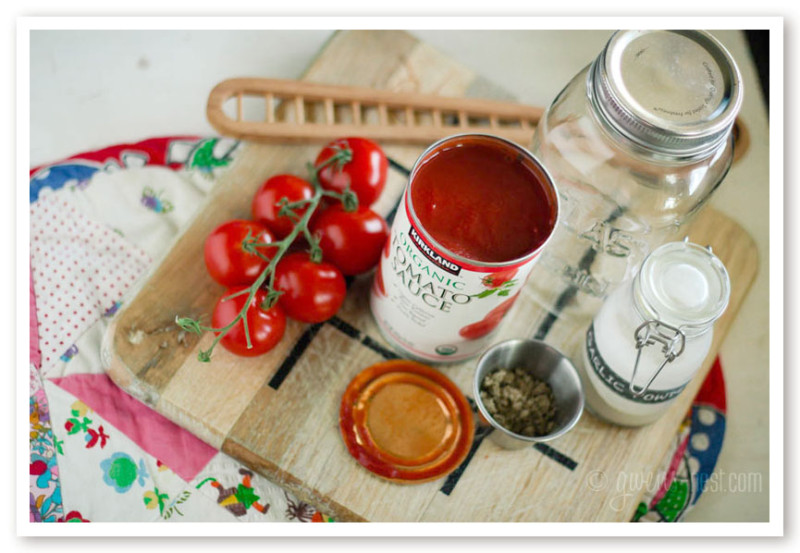
With THM, the easiest place to start for me is to identify the carb sources: is the recipe completely dependent on a large amount of grain, beans, or fruit? Then it’s begging to be an energizing “E” recipe and we’ll start by finding ways to get our fat amounts pulled back into plan guidelines.
Is my recipe highly dependent on lots of cheese, butter, or a fatty meat? Then it’s going to be easiest to converted to a satisfying “S” dish, so we’ll start looking for ways to lighten up the carb content so I stick within plan guidelines. It’s a great idea to scale back on your fats on super rich recipes. I find that I can usually cut back a lot, which allows you to enjoy a good sized portion and not to get too calorie heavy needlessly. Just use the fats and cheeses that you’ll need to achieve the right taste and texture.
Some recipes rely on both fats and carbs, and these can still be on plan as healthy crossovers if you sub out for low glycemic sweeteners and pasta options.
Search for Proven Recipes First
I love to search on Pinterest and also do a Google search to see how others have converted recipes, especially if it’s a baked item like cake, cookies, etc. There’s no need to waste ingredients and reinvent the wheel with low glycemic or low fat baking, because there are loads of great recipes out there in the blogosphere already!
If you are interested in making blonde brownies low glycemic, then try Googling:
- Paleo blonde brownies
- Paleo blondies
- Sugar Free blonde brownies
- Grain Free blonde brownies…etc.
You get the general idea. Be creative and be sure to check Pinterest for great inspirational recipes, or follow group boards that fit with your diet convictions.
One tip: “Sugar free” doesn’t *always* mean sugar free. Some bloggers refer to recipes that use no refined sugar as “sugar free” but you’ll still find honey, maple syrup, ground dates, or fruit juice concentrates used as sweeteners. So be forewarned.
I’ll often find two or three inspiration recipes and then work from them to create a version that is closest to the recipe I’m trying to recreate.
Sub Smart
Some subs are SUPER easy…like replacing a junky tortilla for a low carb version.
But there is an art and science to subbing for baked goods. Though we really can’t cover the gamut in this article, suffice it to say that there are lots and lots of ideas and inspirations on subbing for slow or low glycemic cooking and baking. Pinterest, your favorite blogger, or cookbook (mine is the Trim Healthy Mama book) will give you ideas about using creative subs in your own recipes.
[bctt tweet=”There is an art and science to subbing for low glycemic baked goods”]
Some of my favorite subs to play with are:
- Greek yogurt instead of sour cream to make a dish lower in fat
- instead of fats, add moisture to low fat baked goods with pumpkin, applesauce, or even drained mashed beans
- cauliflower makes a great potato sub in soups, casseroles, and mashes
- radishes are also a great sub for small roasted potatoes
Flour subs are the trickiest, so I test out variations on proven recipes to get my recipe just right.
Do The Math
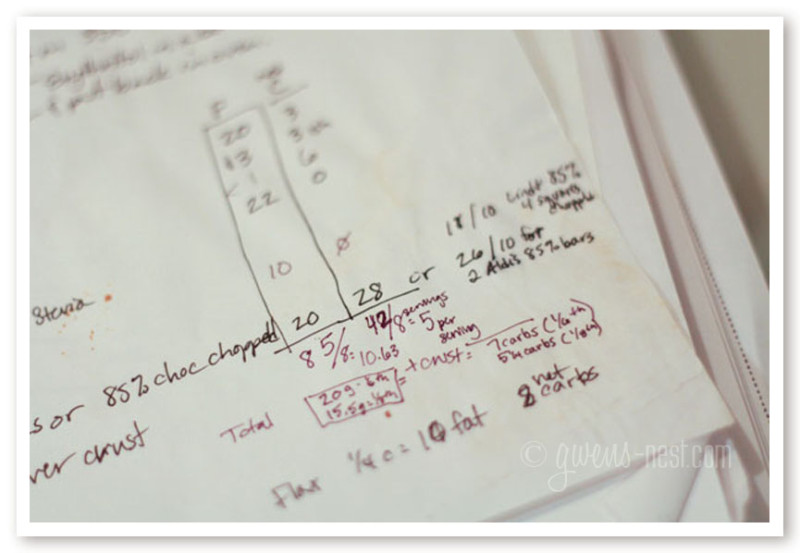 Now, I’m *normally* not a numbers girl, but once I have a recipe drafted out, I will quickly calculate the fat and net carb counts for the contributing ingredients. Once I get the totals, I’ll divide by the serving size to make sure I’m in the ballpark. (To figure the net carb count, simply subtract the total fiber amount from the total carb amount.)
Now, I’m *normally* not a numbers girl, but once I have a recipe drafted out, I will quickly calculate the fat and net carb counts for the contributing ingredients. Once I get the totals, I’ll divide by the serving size to make sure I’m in the ballpark. (To figure the net carb count, simply subtract the total fiber amount from the total carb amount.)
If I’m playing with a casserole or brownie recipe, I can tweak serving size up or down to fit my needs. Do I want to leave room for fats or carbs that may be added to my plate in the meal? Will I feel satisfied with the serving size, or is it too skimpy? Is there any wiggle room in the ingredients to shave off a few more carbs or fat grams to bump the serving size up a bit more?
For example, if I’m working on a brownie recipe, this conversation might go on in my head:
Can I cut 8 huge pieces and still stay within plan guidelines? Yes! If I cut it into 8 slices, they are going to contribute too many carbs to eat them right after an S meal, but I can enjoy one as a meal or snack. Wait…if my giant brownie has a full serving of 10 grams of carbs, then I won’t have room to add that scoop of on plan strawberry ice cream on top. What if I cut back to 10 big brownies and leave a little wiggle room for adding in a couple of carbs elsewhere in the meal? Bingo!
And I add the final counts and serving size to the recipe I’m creating.
Test, Taste & Tweak!
You’re in the home stretch! I’ve found that it’s really rare that a dish turns out exactly like you want it to the first time you convert recipes. It may take several more tries and tweaks to get it just the way you like it. I am my own worst critic.
Wait. That’s not true…my kids are my worst critics, so I know if it passes their inspection with flying colors that it’s a keeper. And it usually takes a few tries. 🙂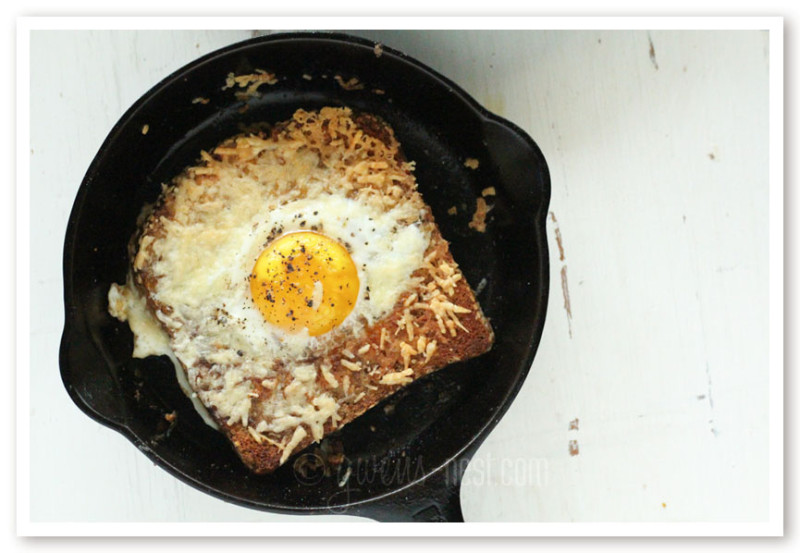
Please just promise me that you won’t crumple up your recipe and toss it!
Keep it out on the counter and right after you try the dish, write down your impressions on the margin of your recipe: too bland…too dry, not sweet enough, needs more salt. Anything that stands out to you that still needs work.
If you have ideas on how to fix it next time, go ahead *right then* and pencil that in over your recipe or write in a different color ink or pen with a note to adjust it for version 2.0. If my recipe isn’t sweet enough or lacks flavor (i.e. needs more salt), then I will up the measurement right then in a green sharpie, so I will have a good starting point guess for my next go around.
Even if a recipe turns out really good, I will usually ask, “is there anything I could do to make this better next time?” Then write your ideas or serving suggestions right on the page to give yourself a big head start the next time you make it.
I’ve had many, many recipe bombs, but the creative process in the kitchen is fun for me and keeps me coming back. And the fireworks when a recipe turns out amazing makes it all worth it.
Follow me on Pinterest and never miss a recipe!
Follow Gwen’s Nest
Follow Gwen’s Nest’s board Gwen’s Nest Healthy Recipes on Pinterest.

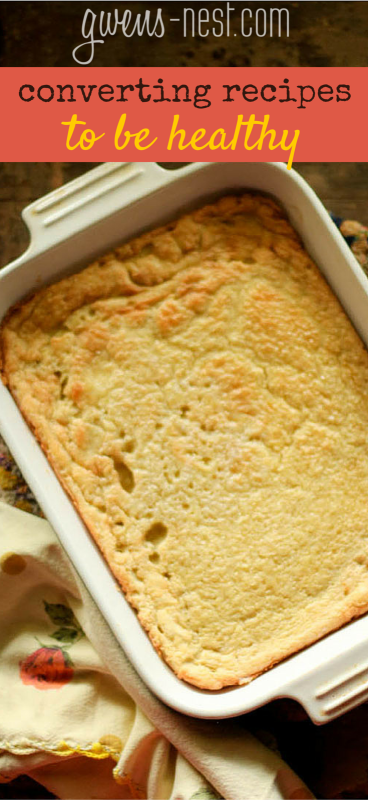
Gwen, you’ve said you haven’t found a satisfactory recipe for cookies yet. Have you worked on a recipe using the new baking blend? Frankly, being a former baker, I don’t eat many thm sweets because they’re not the same.
Hi Diane!
I’m experimenting my way through the new cookbook with some baking blend that I purchased, but I’ve not tried cookies yet. I’m happy with the low carb muffins, cakes, and brownies so far. The low carb flours can provide pretty nice loft & softness, but I’m still looking for just the right combo to get that crunch.
Have you found baking blend to typically sub in even amounts for regular flour when making muffins/breads?
Hmmm. I’d have to say no. I am not doing much in the way of trying to sub Baking Blend with recipes calling for regular flour, but I have tried subbing it out for oat flour in a recipe and it was completely different in texture…too tough.
Low carb flours are a whole different animal. Nothing is going to act just like the “normal” flour I grew up with. 🙂 But with some tweaking, you can create some great stuff with the low carb options. And there are SO many great blogs out there now, that odds are you can find an already converted recipe.
I would like to try and use costco’s namaste flour for a bbc recipe of bara brith bread. any ideas?
I’m not familiar with these, but I bet Google could help you. 🙂
Thank you for your web page!! A very great resource for someone new to trim healthy Mama’s!
Thank you, Toni!